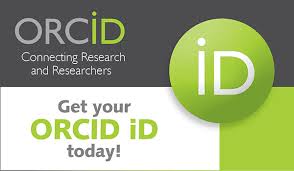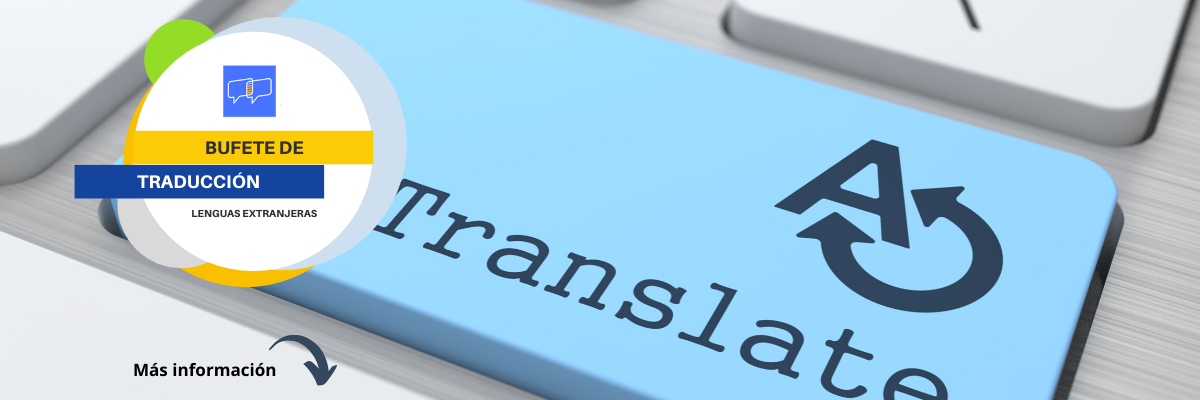Contaminantes presentes en agua y su potencial impacto en la salud
DOI:
https://doi.org/10.36790/epistemus.v19i38.407Palabras clave:
Salud pública, Calidad del agua, Sustancias tóxicas, Contaminación del agua, Contaminantes emergentesResumen
La salud está directamente relacionada con la calidad del agua. La incidencia de intoxicaciones o enfermedades, generadas por la exposición a contaminantes tóxicos del agua, ha incrementado significativamente durante el tiempo hasta llegar a ser considerado un problema de salud pública que crece en importancia. Las actividades humanas y el incremento de la población mundial inciden en la contaminación del agua superficial y subterránea. Por ello, existe la necesidad de promover leyes y crear regulaciones que limiten la presencia de sustancias tóxicas que aún no han sido incluidas en la normatividad nacional e internacional, así como de desarrollar estrategias efectivas para la detección y remoción de contaminantes emergentes en agua que representan una amenaza para la salud pública y ambiental. El objetivo de este artículo es abordar esta temática que está directamente relacionada con la agenda de los objetivos de desarrollo sostenible de la Organización de las Naciones Unidas.
Descargas
Citas
WHO, Guidelines for drinking-water quality: fourth edition incorporating the first and second addenda. Geneva: World Health Organization, 2022. [En línea]. Disponible en: https://www.who.int/publications/i/item/9789240045064
S. Sauvé y M. Desrosiers, “A review of what is an emerging contaminant”, Chemistry Central Journal, vol. 8, n.o 1, p. 15, dic. 2014, doi: 10.1186/1752-153X-8-15. DOI: https://doi.org/10.1186/1752-153X-8-15
S. Heidrich, M. Schirmer, H. Weiss, P. Wycisk, J. Grossmann, y A. Kaschl, “Regionally contaminated aquifers - toxicological relevance and remediation options (Bitterfeld case study)”, Toxicology, vol. 205, n.o 3, pp. 143-155, dic. 2004, doi: 10.1016/j.tox.2004.06.055. DOI: https://doi.org/10.1016/j.tox.2004.06.055
P. H. P. Stefano, A. Roisenberg, M. R. Santos, M. A. Dias, y C. C. Montagner, “Unraveling the occurrence of contaminants of emerging concern in groundwater from urban setting: A combined multidisciplinary approach and self-organizing maps”, Chemosphere, vol. 299, p. 134395, jul. 2022, doi: 10.1016/j.chemosphere.2022.134395. DOI: https://doi.org/10.1016/j.chemosphere.2022.134395
C. J. Vörösmarty et al., “Global threats to human water security and river biodiversity”, Nature, vol. 467, n.o 7315, pp. 555-561, sep. 2010, doi: 10.1038/nature09440. DOI: https://doi.org/10.1038/nature09440
J. W. Tracy, A. Guo, K. Liang, J. Bartram, y M. Fisher, “Sources of and Solutions to Toxic Metal and Metalloid Contamination in Small Rural Drinking Water Systems: A Rapid Review”, IJERPH, vol. 17, n.o 19, p. 7076, sep. 2020, doi: 10.3390/ijerph17197076. DOI: https://doi.org/10.3390/ijerph17197076
M. Rigoletto, P. Calza, E. Gaggero, y E. Laurenti, “Hybrid materials for the removal of emerging pollutants in water: classification, synthesis, and properties”, Chemical Engineering Journal Advances, vol. 10, p. 100252, may 2022, doi: 10.1016/j.ceja.2022.100252. DOI: https://doi.org/10.1016/j.ceja.2022.100252
R. K. Mishra, S. S. Mentha, Y. Misra, y N. Dwivedi, “Emerging pollutants of severe environmental concern in water and wastewater: A comprehensive review on current developments and future research”, Water-Energy Nexus, vol. 6, pp. 74-95, dic. 2023, doi: 10.1016/j.wen.2023.08.002. DOI: https://doi.org/10.1016/j.wen.2023.08.002
V. K. Parida, D. Saidulu, A. Majumder, A. Srivastava, B. Gupta, y A. K. Gupta, “Emerging contaminants in wastewater: A critical review on occurrence, existing legislations, risk assessment, and sustainable treatment alternatives”, Journal of Environmental Chemical Engineering, vol. 9, n.o 5, p. 105966, oct. 2021, doi: 10.1016/j.jece.2021.105966. DOI: https://doi.org/10.1016/j.jece.2021.105966
P. Kovalakova, L. Cizmas, T. J. McDonald, B. Marsalek, M. Feng, y V. K. Sharma, “Occurrence and toxicity of antibiotics in the aquatic environment: A review”, Chemosphere, vol. 251, p. 126351, jul. 2020, doi: 10.1016/j.chemosphere.2020.126351. DOI: https://doi.org/10.1016/j.chemosphere.2020.126351
EPA, “Drinking Water Health Advisories for PFOA and PFOS”, Environmental Protection Agency, EPA 800-F-16-003, 2016. [En línea]. Disponible en: https://www.epa.gov/sites/default/files/2016-06/documents/drinkingwaterhealthadvisories_pfoa_pfos_updated_5.31.16.pdf
ATSDR, “Malathion”, Agency for Toxic Substances and Disease Registry, Fact Sheet, 2003. [En línea]. Disponible en: https://www.atsdr.cdc.gov/toxfaqs/tfacts154.pdf
EPA, “National Primary Drinking Water Regulations”, Environmental Protection Agency, EPA 816-F-09-004, 2009. [En línea]. Disponible en: https://www.epa.gov/sites/default/files/2016-06/documents/npwdr_complete_table.pdf
Secretaría de Salud, “NOM-127-SSA1-2021, Agua para uso y consumo humano. Límites permisibles de la calidad del agua”, Secretaría de Salud, Ciudad de México, Diario Oficial de la Federación, 2021. [En línea]. Disponible en: https://www.dof.gob.mx/nota_detalle_popup.php?codigo=5650705
EPA, “Phthalates”, Environmental Protection Agency, Action Plan, 2012. [En línea]. Disponible en: https://www.epa.gov/sites/default/files/2015-09/documents/phthalates_actionplan_revised_2012-03-14.pdf
EPA, “Polybrominated Diphenyl Ethers (PBDEs)”, Environmental Protection Agency, Fact Sheet EPA 505-F-17-015, 2017. [En línea]. Disponible en: https://www.epa.gov/sites/default/files/2014-03/documents/ffrrofactsheet_contaminant_perchlorate_january2014_final_0.pdf
WHO, Guidelines for drinking-water quality: small water supplies. World Health Organization, 2024. [En línea]. Disponible en: https://www.who.int/publications/i/item/9789240088740
L. E. Armstrong y G. L. Guo, “Understanding Environmental Contaminants’ Direct Effects on Non-alcoholic Fatty Liver Disease Progression”, Current Environmental Health Reports, vol. 6, n.o 3, pp. 95-104, sep. 2019, doi: 10.1007/s40572-019-00231-x. DOI: https://doi.org/10.1007/s40572-019-00231-x
C. R. Kothapalli, “Differential impact of heavy metals on neurotoxicity during development and in aging central nervous system”, Current Opinion in Toxicology, vol. 26, pp. 33-38, jun. 2021, doi: 10.1016/j.cotox.2021.04.003. DOI: https://doi.org/10.1016/j.cotox.2021.04.003
C. C. Thomas, A. C. Nsonwu-Anyanwu, C. A. O. Usoro, E. S. Agoro, y A. N. Idenyi, “Hepato-renal toxicities associated with heavy metal contamination of water sources among residents of an oil contaminated area in Nigeria”, Ecotoxicology and Environmental Safety, vol. 212, p. 111988, abr. 2021, doi: 10.1016/j.ecoenv.2021.111988. DOI: https://doi.org/10.1016/j.ecoenv.2021.111988
E. Habeeb et al., “Role of environmental toxicants in the development of hypertensive and cardiovascular diseases”, Toxicology Reports, vol. 9, pp. 521-533, ene. 2022, doi: 10.1016/j.toxrep.2022.03.019. DOI: https://doi.org/10.1016/j.toxrep.2022.03.019
A. Popov Aleksandrov et al., “Immunomodulation by heavy metals as a contributing factor to inflammatory diseases and autoimmune reactions: Cadmium as an example”, Immunology Letters, vol. 240, pp. 106-122, dic. 2021, doi: 10.1016/j.imlet.2021.10.003. DOI: https://doi.org/10.1016/j.imlet.2021.10.003
V. Naffaa, O. Laprévote, y A.-L. Schang, “Effects of endocrine disrupting chemicals on myelin development and diseases”, NeuroToxicology, vol. 83, pp. 51-68, mar. 2021, doi: 10.1016/j.neuro.2020.12.009. DOI: https://doi.org/10.1016/j.neuro.2020.12.009
S. G. Danby et al., “The Effect of Water Hardness on Surfactant Deposition after Washing and Subsequent Skin Irritation in Atopic Dermatitis Patients and Healthy Control Subjects”, Journal of Investigative Dermatology, vol. 138, n.o 1, pp. 68-77, ene. 2018, doi: 10.1016/j.jid.2017.08.037. DOI: https://doi.org/10.1016/j.jid.2017.08.037
H. A. González-Ponce, A. R. Rincón-Sánchez, F. Jaramillo-Juárez, y H. Moshage, “Natural Dietary Pigments: Potential Mediators against Hepatic Damage Induced by Over-The-Counter Non-Steroidal Anti-Inflammatory and Analgesic Drugs”, Nutrients, vol. 10, n.o 2, 2018, doi: 10.3390/nu10020117. DOI: https://doi.org/10.3390/nu10020117
T. Wang, L. Wang, Q. Chen, N. Kalogerakis, R. Ji, y Y. Ma, “Interactions between microplastics and organic pollutants: Effects on toxicity, bioaccumulation, degradation, and transport”, Science of The Total Environment, vol. 748, p. 142427, dic. 2020, doi: 10.1016/j.scitotenv.2020.142427. DOI: https://doi.org/10.1016/j.scitotenv.2020.142427
P. Pal et al., “Molecular basis of fluoride toxicities: Beyond benefits and implications in human disorders”, Genes & Diseases, vol. 10, n.o 4, pp. 1470-1493, jul. 2023, doi: 10.1016/j.gendis.2022.09.004. DOI: https://doi.org/10.1016/j.gendis.2022.09.004
F. González-Martínez, B. Johnson-Restrepo, y L. A. Quiñones, “Arsenic inorganic exposure, metabolism, genetic biomarkers and its impact on human health: A mini-review”, Toxicology Letters, vol. 398, pp. 105-117, jul. 2024, doi: 10.1016/j.toxlet.2024.06.008. DOI: https://doi.org/10.1016/j.toxlet.2024.06.008
P. Bhattacharjee, M. Banerjee, y A. K. Giri, “Role of genomic instability in arsenic-induced carcinogenicity. A review”, Environment International, vol. 53, pp. 29-40, mar. 2013, doi: 10.1016/j.envint.2012.12.004. DOI: https://doi.org/10.1016/j.envint.2012.12.004
J. Briffa, E. Sinagra, y R. Blundell, “Heavy metal pollution in the environment and their toxicological effects on humans”, Heliyon, vol. 6, n.o 9, p. e04691, sep. 2020, doi: 10.1016/j.heliyon.2020.e04691. DOI: https://doi.org/10.1016/j.heliyon.2020.e04691
E. I. Prest, F. Hammes, M. C. M. van Loosdrecht, y J. S. Vrouwenvelder, “Biological Stability of Drinking Water: Controlling Factors, Methods, and Challenges”, Front. Microbiol., vol. 7, feb. 2016, doi: 10.3389/fmicb.2016.00045. DOI: https://doi.org/10.3389/fmicb.2016.00045
H. Li, C. Smith, L. Wang, Z. Li, C. Xiong, y R. Zhang, “Combining Spatial Analysis and a Drinking Water Quality Index to Evaluate Monitoring Data”, IJERPH, vol. 16, n.o 3, p. 357, ene. 2019, doi: 10.3390/ijerph16030357. DOI: https://doi.org/10.3390/ijerph16030357
H. Wang, M. A. Edwards, J. O. Falkinham, y A. Pruden, “Probiotic Approach to Pathogen Control in Premise Plumbing Systems? A Review”, Environ. Sci. Technol., vol. 47, n.o 18, pp. 10117-10128, sep. 2013, doi: 10.1021/es402455r. DOI: https://doi.org/10.1021/es402455r
J. Wingender y H.-C. Flemming, “Biofilms in drinking water and their role as reservoir for pathogens”, International Journal of Hygiene and Environmental Health, vol. 214, n.o 6, pp. 417-423, nov. 2011, doi: 10.1016/j.ijheh.2011.05.009. DOI: https://doi.org/10.1016/j.ijheh.2011.05.009
G. Singh, A. Singh, y V. Kumar Mishra, “A critical review of occurrence, sources, fate, ecological risk, and health effect of emerging contaminants in water and wastewater”, Environmental Nanotechnology, Monitoring & Management, p. 100994, sep. 2024, doi: 10.1016/j.enmm.2024.100994. DOI: https://doi.org/10.1016/j.enmm.2024.100994
G. Nandikes, P. Pathak, A. S. Razak, V. Narayanamurthy, y L. Singh, “Occurrence, environmental risks and biological remediation mechanisms of Triclosan in wastewaters: Challenges and perspectives”, Journal of Water Process Engineering, vol. 49, p. 103078, oct. 2022, doi: 10.1016/j.jwpe.2022.103078. DOI: https://doi.org/10.1016/j.jwpe.2022.103078
T. M. Tri et al., “Emerging Endocrine Disrupting Chemicals and Pharmaceuticals in Vietnam: A Review of Environmental Occurrence and Fate in Aquatic and Indoor Environments”, en Persistent Organic Chemicals in the Environment: Status and Trends in the Pacific Basin Countries II Temporal Trends, vol. 1244, 0 vols., en ACS Symposium Series, no. 1244, vol. 1244. American Chemical Society, 2016, pp. 223-253. doi: 10.1021/bk-2016-1244.ch010. DOI: https://doi.org/10.1021/bk-2016-1244.ch010
P. Chinnaiyan, S. G. Thampi, M. Kumar, y K. M. Mini, “Pharmaceutical products as emerging contaminant in water: relevance for developing nations and identification of critical compounds for Indian environment”, Environmental Monitoring and Assessment, vol. 190, n.o 5, p. 288, abr. 2018, doi: 10.1007/s10661-018-6672-9. DOI: https://doi.org/10.1007/s10661-018-6672-9
B. M. Sharma et al., “Health and ecological risk assessment of emerging contaminants (pharmaceuticals, personal care products, and artificial sweeteners) in surface and groundwater (drinking water) in the Ganges River Basin, India”, Science of The Total Environment, vol. 646, pp. 1459-1467, ene. 2019, doi: 10.1016/j.scitotenv.2018.07.235. DOI: https://doi.org/10.1016/j.scitotenv.2018.07.235
K. Świacka, A. Michnowska, J. Maculewicz, M. Caban, y K. Smolarz, “Toxic effects of NSAIDs in non-target species: A review from the perspective of the aquatic environment”, Environmental Pollution, vol. 273, p. 115891, mar. 2021, doi: 10.1016/j.envpol.2020.115891. DOI: https://doi.org/10.1016/j.envpol.2020.115891
M. Sousi et al., “Multi-parametric assessment of biological stability of drinking water produced from groundwater: Reverse osmosis vs. conventional treatment”, Water Research, vol. 186, p. 116317, nov. 2020, doi: 10.1016/j.watres.2020.116317. DOI: https://doi.org/10.1016/j.watres.2020.116317
R. T. Wilkin, T. R. Lee, D. G. Beak, R. Anderson, y B. Burns, “Groundwater co-contaminant behavior of arsenic and selenium at a lead and zinc smelting facility”, Applied Geochemistry, vol. 89, pp. 255-264, feb. 2018, doi: 10.1016/j.apgeochem.2017.12.011. DOI: https://doi.org/10.1016/j.apgeochem.2017.12.011
A. Malek, G. R. Rao, y T. Thomas, “Waste-to-wealth approach in water economy: The case of beneficiation of mercury-contaminated water in hydrogen production”, International Journal of Hydrogen Energy, vol. 46, n.o 52, pp. 26677-26692, jul. 2021, doi: 10.1016/j.ijhydene.2021.05.133. DOI: https://doi.org/10.1016/j.ijhydene.2021.05.133
F. J. A. Avelar González, E. M. Ramírez López, Ma. C. Martínez Saldaña, A. L. Guerrero Barrera, F. Jaramillo Juárez, y J. L. Reyes Sánchez, “Water Quality in the State of Aguascalientes and its Effects on the Population’s Health”, en Water Resources in Mexico: Scarcity, Degradation, Stress, Conflicts, Management, and Policy, Ú. Oswald Spring, Ed., Berlin, Heidelberg: Springer, 2011, pp. 217-229. doi: 10.1007/978-3-642-05432-7_16. DOI: https://doi.org/10.1007/978-3-642-05432-7_16
B. S. Amézaga-Campos, R. Villanueva-Estrada, A. Carrillo-Chavez, J. I. Morales-Arredondo, y J. Morán-Ramírez, “Hydrogeochemistry characterization of an overexploited municipal, agricultural, and industrial aquifer, central Mexico”, Applied Geochemistry, vol. 142, p. 105310, jul. 2022, doi: 10.1016/j.apgeochem.2022.105310. DOI: https://doi.org/10.1016/j.apgeochem.2022.105310
A. T. Aparicio y P. de J. Hernández Canales, “Gestión de riesgos y desastres socioambientales. El caso de la mina Buenavista del cobre de Cananea”, Investigaciones Geográficas, Boletín del Instituto de Geografía, vol. 2017, n.o 93, pp. 126-139, ago. 2017, doi: 10.14350/rig.54770. DOI: https://doi.org/10.14350/rig.54770
Secretaría de Medio Ambiente y Recursos Naturales, “NOM-014-CONAGUA-2003, Requisitos para la recarga artificial de acuíferos con agua residual tratada”, Secretaría de Medio Ambiente y Recursos Naturales, Ciudad de México, Diario Oficial de la Federación, 2009. [En línea]. Disponible en: https://dof.gob.mx/nota_detalle_popup.php?codigo=5105753

Publicado
Cómo citar
Número
Sección
Licencia
Derechos de autor 2025 EPISTEMUS

Esta obra está bajo una licencia internacional Creative Commons Atribución-NoComercial-CompartirIgual 4.0.
La revista adquiere los derechos patrimoniales de los artículos sólo para difusión sin ningún fin de lucro, sin menoscabo de los propios derechos de autoría.
Los autores son los legítimos titulares de los derechos de propiedad intelectual de sus respectivos artículos, y en tal calidad, al enviar sus textos expresan su deseo de colaborar con la Revista Epistemus, editada semestralmente por la Universidad de Sonora.
Por lo anterior, de manera libre, voluntaria y a título gratuito, una vez aceptado el artículo para su publicación, ceden sus derechos a la Universidad de Sonora para que la Universidad de Sonora edite, publique, distribuya y ponga a disposición a través de intranets, internet o CD dicha obra, sin limitación alguna de forma o tiempo, siempre y cuando sea sin fines de lucro y con la obligación expresa de respetar y mencionar el crédito que corresponde a los autores en cualquier utilización que se haga del mismo.
Queda entendido que esta autorización no es una cesión o transmisión de alguno de sus derechos patrimoniales en favor de la mencionada institución. La UniSon le garantiza el derecho de reproducir la contribución por cualquier medio en el cual usted sea el autor, sujeto a que se otorgue el crédito correspondiente a la publicación original de la contribución en Epistemus.
Salvo indicación contraria, todos los contenidos de la edición electrónica se distribuyen bajo una licencia de uso y Attribution-NonCommercial-ShareAlike 4.0 International (CC BY-NC-SA 4.0) Puede consultar desde aquí la versión informativa y el texto legal de la licencia. Esta circunstancia ha de hacerse constar expresamente de esta forma cuando sea necesario.















